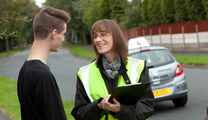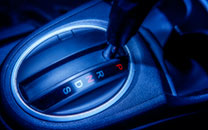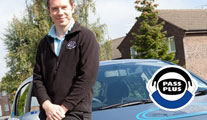The country may be in lockdown once again but that is no reason to stop thinking about how to approach your driving, once lessons can restart. Before you book your first driving lessons for beginners you need to put yourself in a positive frame of mind and put in place a to-do list of resolutions.
Increase Your Confidence
This is easier said than done you may think. Most new drivers worry about certain driving scenarios, such as hearing emergency vehicle sirens or doing an emergency stop for example, and become anxious about how they’ll cope. As you drive more your confidence will naturally increase but if you are unable to start your lessons there are still things you can do to build up your confidence.
Start Talking!
Start by talking to the most experienced driver you know and ask them questions about the issues which bother you the most. They will be only too happy to pass on their knowledge.
Keep in Touch with Your Driving School
Your chosen instructor will be happy to speak to you about any worries or concerns you may have about your lessons and will do their best to calm your nerves. After all, they want you to be enthusiastic about learning to drive and want you to be able to pass your test.
Be Calm Behind the Wheel
This is one resolution which you must pay extra attention to as a driver who is prone to losing their cool on the road is one who will make the most mistakes and endanger other motorists. Nobody wants to see a learner exhibiting road rage and neither will it get you any closer to passing your test.
Practise a drill for when you can get behind the wheel: depending on the weather of course, plan what you’re going to wear when you drive. Bulky clothing and inappropriate footwear can make you feel flustered and uncomfortable so wear something loose and comfortable with flat shoes.
Learn some calming breathing exercises if you’re worried about losing your cool.
Mirror, Signal, Manoeuvre
Driving well means sticking to the routines taught by your instructor. Get into the habit of checking your mirrors not only before any manoeuvre but also periodically while driving. Being alert to what’s around you will save you from potential test failure.
Finally, trust in your instructor. Choose one who you get on well with and who inspires your confidence and calms your nerves and you will learn to be a safe, competent and confident driver.












